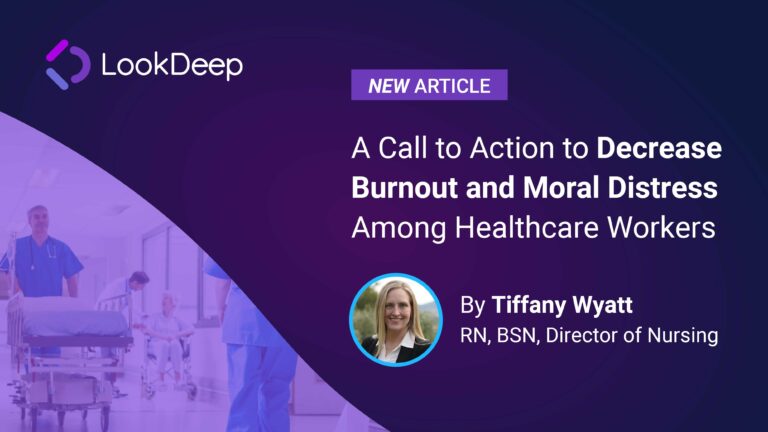A Call to Action to Decrease Burnout and Moral Distress Among Healthcare Workers
Burnout of medical professionals has become a critical issue and impacts the well-being of medical professionals and the quality of patient care. Moral distress is an associated heartbreaking phenomenon in the healthcare field where healthcare workers know the best decision to make, but are unable to act due to limited resources or circumstances they cannot control. It has been linked to feelings of psychological impact such as profound guilt, shame, and anger.
Implementing strategies to reduce administrative burdens and enhance workplace flexibility are essential to address these challenges. These methods help healthcare workers prioritize quality time with patients and colleagues, and alleviate the inefficiencies, excessive documentation, and limited autonomy contributing to burnout. Fostering a more supportive and sustainable work environment leads to better patient outcomes and increased job satisfaction among healthcare workers.
Strategies to Support Nurses as Challenges Persist
With nearly two-thirds of nurses in the United States experiencing burnout — including 69% of those under 25 years of age (source: American Nurses Association) – healthcare leaders are looking for solutions and strategies to address contributing factors including inefficient workflows, excessive documentation, and staffing shortages, and more.
Key themes to do this are emerging:
– Optimizing staffing and scheduling
– Automating non-clinical data collection tasks (like billing and quality reporting)
– Reviewing and streamlining prior authorization processes
– Reducing duplicative documentation
– Addressing violence and abuse in the workplace
– Offering interprofessional training, mentoring, and support programs
– Implementing strategies to help healthcare workers prioritize quality time with patients
Virtual nursing has great potential to address some critical gaps, but early solutions have been little more than video meetings between virtual teams and the bedside. True impact will require much more of the underlying technologies – primarily AI that aligns with nursing needs and values.
What could Effective Collaboration Between Virtual Nurses and AI Technology Look Like?
Early AI solutions for hospitals often failed to meet expectations and were unreliable. The most advanced computer vision application today, self-driving cars, has been “almost ready” for nearly a decade. Acute care has similar high stakes, but hospitals can’t afford a decade of development. A better approach is “human plus AI”, where AI directs or “nudges” a virtual nurse’s attention to specific situations. The virtual nurse can then use their expertise to augment data and act accordingly.
This is akin to driver-assist for hospitals.
Yet nurses who have celebrated the concept of virtual nursing often are protesting AI. The key to unifying these distinctions is using AI to help the virtual nurse help the bedside team. Instead of burdening bedside nurses with AI, let the AI assist a virtual nurse who makes the final assessment and communicates with the bedside team. This approach protects the time of bedside nurses and provides them with a familiar interface (another nurse) to communicate with.
Transforming virtual nursing solutions into strategic tools to improve hospital care involves significant work. It’s crucial to identify tasks, processes, or assessments where AI nudges can be most effective, such as alerting when patients had a poor night’s rest, are at risk of pressure injuries, or need help with best practices like a delirium prevention checklist.
Virtual nurses, guided by AI nudges, can become essential support for the bedside team, improving patient care and outcomes – and moving the needle to decrease burnout and moral distress among nurses and healthcare workers.
Creating Credibility By Investing in AI for Nurses
Often nurses have been exposed to technology with some benefit but at the price of an unequal additional burden being placed on them. Regaining credibility requires taking steps to address the burdensome portions of nursing with a bigger picture of change in mind.
For example, increasing work schedule flexibility and autonomy is crucial. Employers should consider the needs of healthcare workers who are also parents or caregivers, offering flexible start and end times, preferred off days, and options for virtual care when appropriate. Other strategies include job-sharing, periodic coverage by temporary workers, and shifting tasks across the care team to distribute the workload more evenly.
These initiatives – without pairing them with immediate ROI at an item-by-item level – result in the credibility needed to partner with nurses for bigger more substantive (and impactful) changes like AI-driven virtual nursing. Then, prioritizing initiatives like nurse safety with AI helps showcase the technology as an assistant for nurses rather than a second-guessing of their experience and judgment with patients.
Conclusion – The Unspoken Truths
Healthcare systems are overwhelmed by increasing patient acuity. Improved productivity to enable better coverage is essential. The allocation of that improvement to reducing the burden on the staff vs allowing the hospital to establish a more sustainable financial situation is a challenge and careful balance. Those discussions are essential and value-based tradeoffs that must be considered carefully. Yet without improvement – all sides of the argument lose. AI and Virtual Nursing combined can establish better reach for nurses in their care for patients. We need to collectively focus on creating this powerful combination to improve our potential and then openly discuss how the system should balance allocating the gains from our progress.


